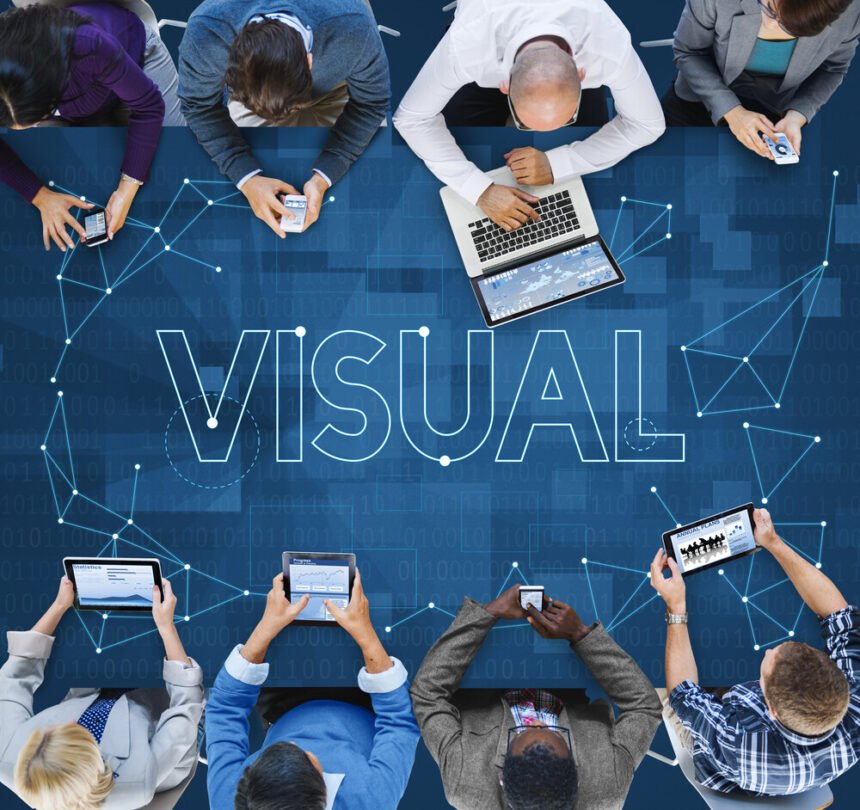The domain of data visualisation is changing fast. From a tool to envisage trends and elucidate patterns to a gateway into the rapidly expanding profusion of visual data that exist, the realm of big data is evolving rapidly. More companies are using big data to glean useful, business-centric insights but traditional infrastructures are not up to the task to handle the tremendous quantities of data generated daily.
This highlights the issue of using big data in a way that stakeholders can understand and use effectively. Classical charting and graphing templates miss the mark with big data as it does not capture the entire data set, nor does it offer the potential to visualize insightful information. Thus visual analytics is bringing more to the party with respect to big data and presenting businesses with a high performance way to analyse data quickly and conveniently.
With any new technology, there are bound to be some challenges on the road to successful innovation, and the same is true for data visualization. The limitations of big data, and consequently big data visualization, are generally the nascent technology required to meet computational speed needs, deciphering and understanding the data, ensuring the quality of data and dealing with statistical issues. In order to deliver actionable insights by leveraging the power of big data, there are a few considerations that can help avoid problems down the line.
Evaluate tools before embarking on a data visualization campaign
Avoiding data visualisation pitfalls starts with choosing the right tools for the job. Before embarking on a big data endeavor it is critical to evaluate the software offerings effectively to decide whether it will meet the brief and fulfill the organization’s expectations.
Fitting a tool correctly into your business model can have positive consequences in all facets. In order to ensure a good fit, it’s essential that the company have a good idea of the potential users in mind and how they are going to apply the tool. For example, with the use of server security protocols, multiple requirements, customization and necessities will need to be taken into consideration before decisions are made. Thus, it makes sense to develop a vision statement prior to tool assessment to ensure that the tools are appraised in line with the company’s expectations for future development.
Standardise the business glossary
This is a crucial step to overcome possible data visualization problems. A common glossary facilitates a collective understanding of how the data framework works and respective frames of reference. This enables adequate interpretation and permits wide scale use of the same information. Differing definitions can cause misunderstandings, discrepancies and difficulties with analysis validity. Standardisation of visualisation prevents each department recreating the same visual but rather working from a centralised visual platform to share the information.
To maintain the glossary’s functionality and accuracy, it must be updated frequently and across the board. By doing this, it can remain a useful tool in the business context as all stakeholders work from the same set of visuals and meanings
Data stewards become gatekeepers for information
There has to be effective data control and monitoring to ensure the visuals remain valid, accurate and relevant. Data stewards become the information point for questions or concerns regarding data use and integrity and are often meaningful data contributors. They also act as gatekeepers between the IT departments and the business executives, effecting and intermediary service, as they are in a position to understand the drivers of the business as well as how the data architecture supports the organization. By leveraging the one to support the other, these intermediaries can be of value to the company.
Know the audience
The modern data user is all for self-service and this is a useful paradigm but with it comes caveats. Users do not necessarily have the skill set or knowledge to navigate the visualizations adequately from the outset, and depending on what results they are interested in, the level of training will differ.
Different users will use data visualization for different outputs and thus offer a wide scope of skills, ranging from active, applied data visualization building and those who prefer to deal with the outcomes only. With this in mind, it is important to know the intended audience for the visualization to decide which form to produce the content in.
Visual analytics enables organizations to utilize procured data and present it in significant ways that generate value and enhance decision making potential. It is associated with complications, but if these are considered adequately before implementation, there is vast potential for a successful data visualisation strategy.

